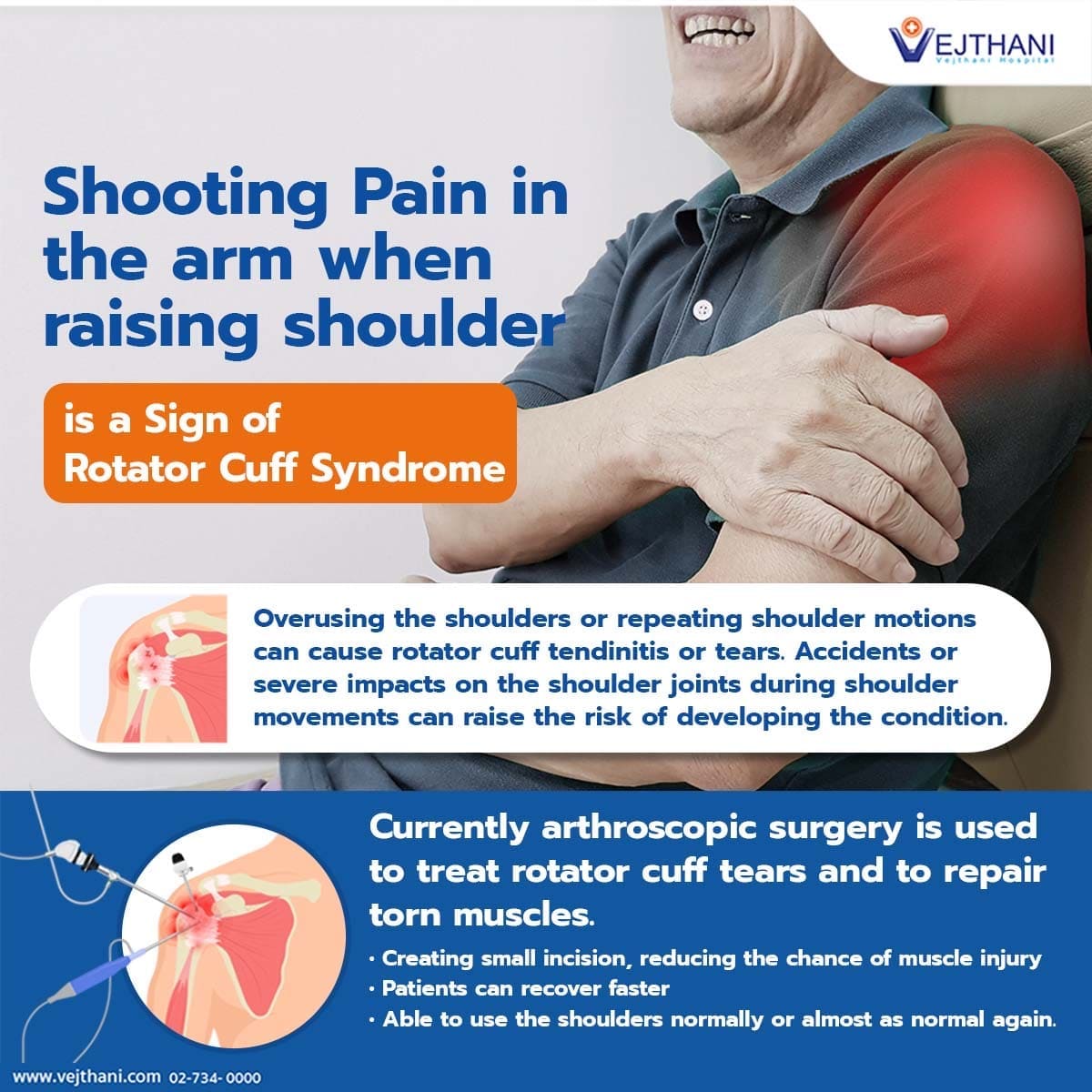

Shoulder pain caused by Rotator cuff syndrome should not be ignored. As the symptoms could become worse and affect your everyday life, leading to a more complicated treatment process.
Using your shoulders in repetitive motions, especially when raising hands continuously while painting walls, wiping windows, hanging clothes, cutting tree branches, and carrying or lifting heavy objects or sports players who are involved in activities that require frequent arm raising motions, such as basketball, badminton and swimming are all at risk of having rotator cuff tendinitis. Injuries that affect the rotator cuff can cause the condition to develop as well.
Dr. Ratthapoom Watcharopas, orthopedic surgeon specialize in sports medicine and shoulder and knee joint surgery at Vejthani Hospital, explained that the rotator cuff comprises four muscles that align from the shoulder muscles and are attached to the bone of the upper arm. The rotator cuff is responsible for supporting shoulder movements, that include raising or spreading the arms and rotating the shoulders. Overusing the shoulders or repeating shoulder motions can cause rotator cuff tendinitis or tears. Accidents or severe impacts on the shoulder joints during shoulder movements can raise the risk of developing the condition.
“Rotator cuff tendinitis or tears cause shoulder pain and shooting pain running to the upper arm when you raise or move your shoulder. Some patients may also have stiffness, moving difficulties or swelling. The initial symptoms may not be severe, but keep using your shoulders despite the symptoms will worsen the pain. The pain tends to appear at night or when the arms are at rest. Other symptoms include weakness in the arms, having a limited range of motion of the shoulders and difficulties in doing certain activities such as washing hair, scratching the back, buttoning and zipping up the back of a dress. This causes sufferings and heavily affect patients’ everyday lives,” said Dr. Ratthapoom.
There are two treatment options for rotator cuff tendinitis or tears to reduce pain
and allow patients to be able to use the shoulders again. The first one is non-surgical method. Your doctor will use a non-steroid anti-inflammatory drug or inject a steroid into the surrounding area of the inflamed muscle. This treatment strives to reduce inflammation, aching and swelling, which is done in conjunction with physiotherapy. Resting and changing how the shoulder joints are used, are also parts of the treatment process. This approach will gradually help relieve the pain and improve the shoulders’ function until they can normally be used again. The treatment, however, may take several weeks or months to be completed. For patients who have debilitating pain, severely torn muscle, or no sign of improvements after receiving the first method of treatment for a long period of time, the doctor will then recommend a surgical treatment. Currently, arthroscopic surgery is used to treat rotator cuff tears and to repair the torn muscles. This creates a small incision, reduces the chance of muscle injury and lowers the risk of complications after the surgery, allowing the patient to recover faster and be able to use the shoulders normally or almost as normal again.
Dr. Ratthapoom suggests that shoulder pain should not be ignored as it can worsen the condition and leads to painful sufferings in everyday life. Moreover, it can complicate the treatment process even further.
For more information, please contact
Orthopedics Center, 2nd Floor, King of Bones Building, Vejthani Hospital
Call +66 (0) 2734-0000 ext. 2298,2299
+66(0)85-223-8888 (English Hotline)
- Readers Rating
- Rated 4.3 stars
4.3 / 5 ( Reviewers) - Outstanding
- Your Rating



























